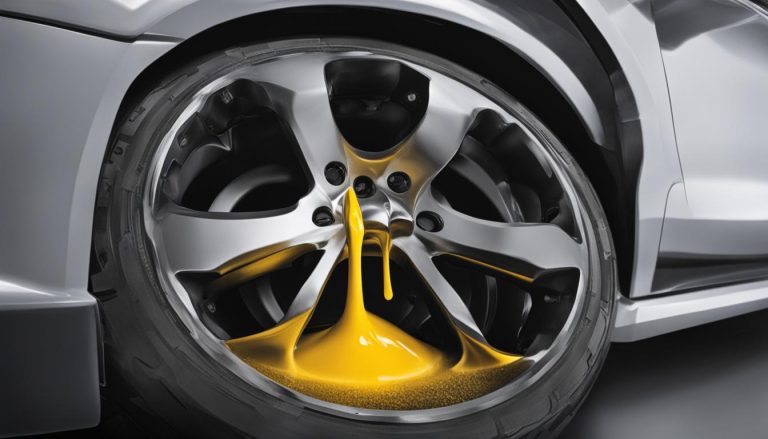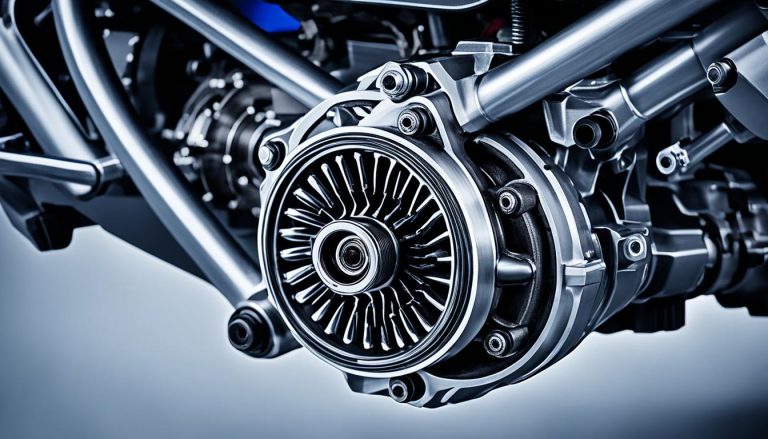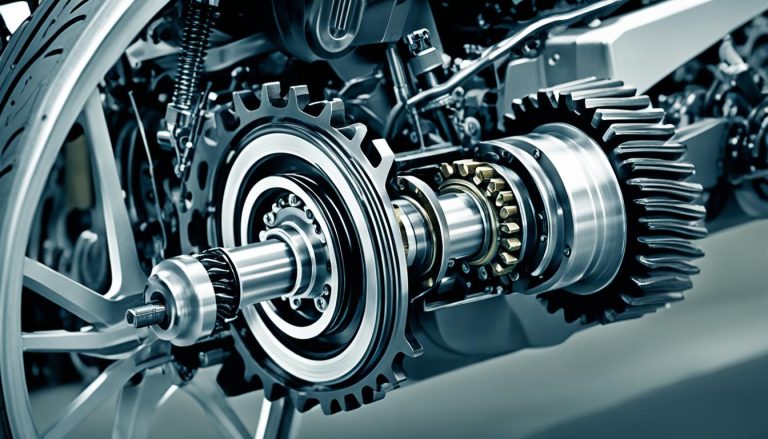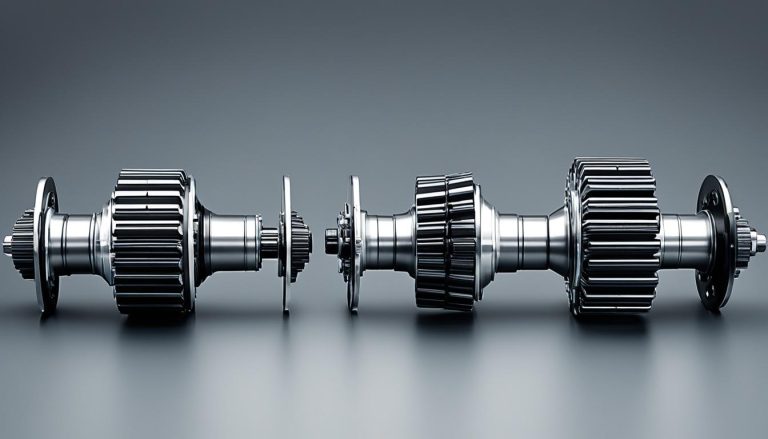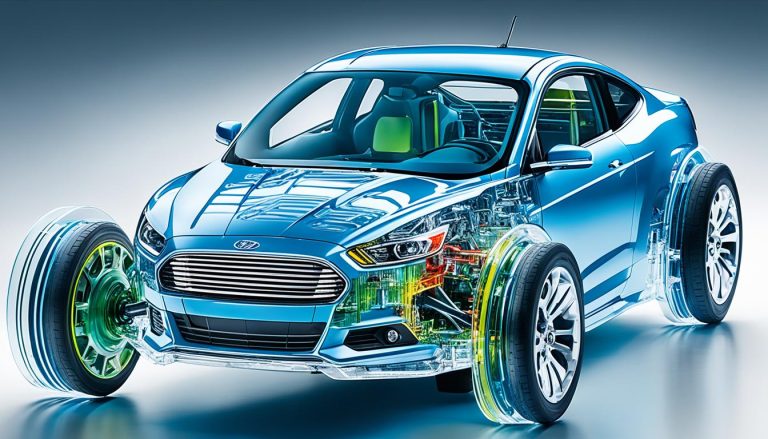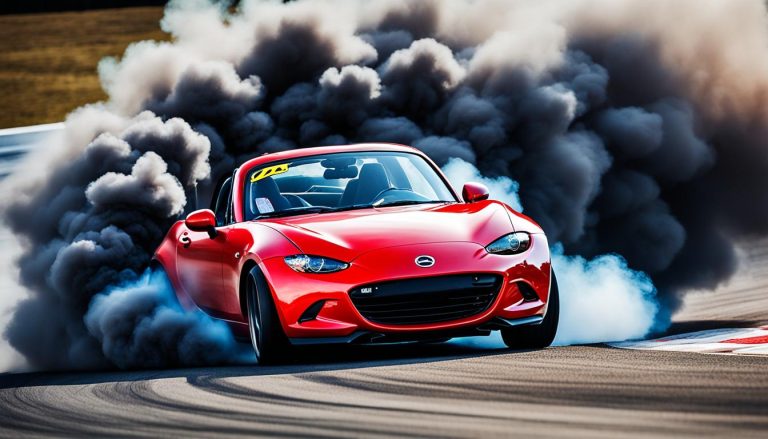Subaru Models with Limited Slip Rear Differentials
Have you ever experienced the unwavering confidence of a car that grips the road, no matter the terrain or weather? If not, it’s time to explore the world of Subaru models with limited slip rear differentials. These marvels of engineering are more than just vehicles; they’re your trusted companions for those beckoning adventures. With Subaru limited slip rear options, get ready to elevate your driving experience to heights you’ve never known.
Whether you’re a seasoned enthusiast or a curious newcomer, the allure of a Subaru with a rear limited slip differential is undeniable. These vehicles are designed not just to tackle the path less traveled but to ensure you do so with absolute control and peace of mind. Discover the models that offer this innovative feature and why it makes a significant difference in the way you drive.
Key Takeaways
- Experience enhanced stability and control across diverse terrains with Subaru’s LSD-equipped models.
- Understand how the inclusion of limited slip differentials in certain Subarus boosts performance and safety.
- Learn about the Subaru models that offer this feature and how it complements the symmetrical AWD system.
- Discover the distinction of the 2004 WRX STI and its mechanical LSD, elevating the driving experience.
- Consider the possibilities of aftermarket LSD upgrades for older Subaru models to enhance traction and performance.
Understanding Limited Slip Differentials in Subarus
If you’ve ever explored the performance capabilities of your Subaru, you may have heard about the limited slip rear differential (LSD) as a critical component. This feature plays a significant role in your vehicle’s ability to conquer slippery roads, steep inclines, and uneven terrain with aplomb. But what exactly does it do, and how does it enhance your driving experience?
How Limited Slip Differentials Improve Traction
Subarus are renowned for their symmetrical all-wheel drive system, providing drivers with superior control and power distribution. The addition of an LSD takes this a step further. It intelligently allocates power to the wheels, ensuring that if one tire starts to slip or lose contact with the ground, the differential redirects torque to the wheel with better grip. This ensures continued momentum and improved traction in low-grip conditions such as mud, snow, or loose gravel—environments where Subarus are frequently tested.
Benefits of Limited Slip Rear Differentials in Subarus
The benefits of the limited slip differential in Subarus are multifaceted. For one, the enhanced traction offers greater stability, allowing you to navigate through inclement weather and treacherous driving conditions safely. By minimizing wheel spin, the LSD ensures that power isn’t wasted, which can make a substantial difference when climbing steep grades or accelerating quickly from a standstill. Overall, the LSD provides a smoother, more predictable driving experience that can give you a sense of confidence behind the wheel of your Subaru.
| Feature | Benefit |
|---|---|
| Better Traction | Ensures power is not lost even when one wheel lifts or slips. |
| Increased Stability | Delivers a more controlled and stable ride in various conditions. |
| Improved Safety | Provides grip in adverse weather, reducing the risk of accidents. |
In essence, the limited slip rear in Subarus is more than just a performance attribute; it’s a commitment to driver safety and vehicle excellence. Whether you’re an adventurer who frequently brushes with the wild or someone who faces the urban jungle’s wet and icy streets, Subarus equipped with an LSD ensure that your journey proceeds without a hitch.
What Subarus Have Limited Slip Rear
If you’re curious about what Subarus have limited slip rear differentials, you’re in the right place. Subaru’s commitment to performance is showcased in their variety of models equipped with this technology, enhancing traction and safety for drivers. Whether you’re tackling snowy roads or exploring off-the-beaten-paths, knowing which models have this feature can be crucial to your driving experience. Below we’ve outlined the Subaru models that come with limited slip differentials across different time frames and configurations.
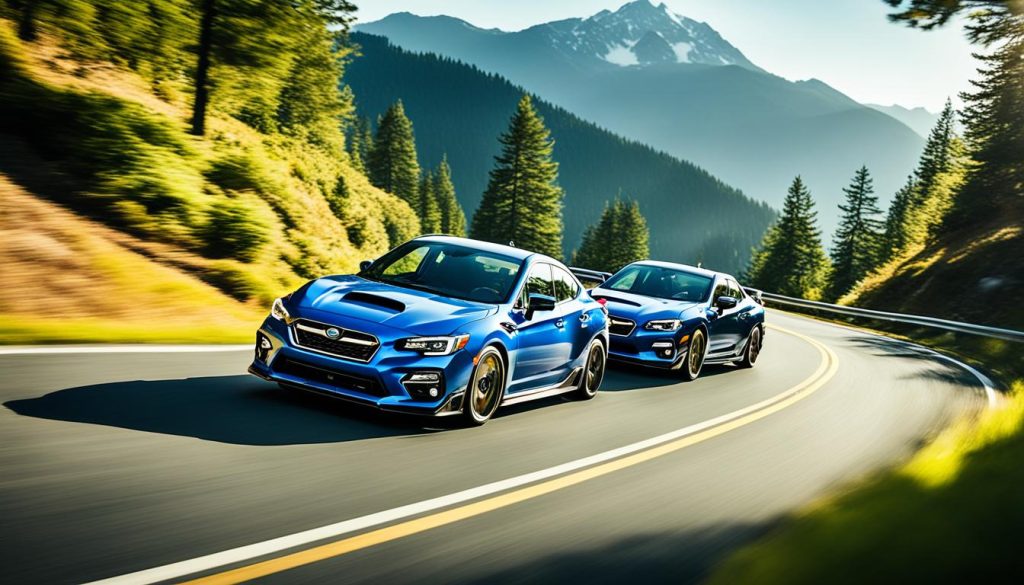
| Model & Year Range | Specifications | Final Drive Ratio | Remarkable Feature |
|---|---|---|---|
| Impreza (2000 – 2001) | 2.5RS 5MT | 4.111 | Viscous coupling unit |
| WRX (2002 – onwards) | 3.545 for 5MT 4.111 for 4EAT |
Varies | Performance adapted for each transmission type |
| WRX STI (2004) | Mechanical LSD | 3.900 | Rally-inspired design for maximum control |
| Legacy GT (2000) | Included LSD | Not specified | Blends luxury with performance |
| Outback 3.0L (2002 – onwards) | Standard LSD | Not specified | Enhanced for rugged terrain |
| Forester S/Turbo (2000 – 2002, 2003 – onwards) | LSD for models with Disc Brakes | Not specified | Reliable for both urban driving and outdoor adventures |
You can see that Subarus equipped with limited slip rear differentials are not just limited to their sportiest models. Even those designed for comfort and everyday utility have benefited from Subaru’s engineering acumen, providing you with a versatile range of options to suit your driving requirements.
The Evolution of All-Wheel Drive in Subaru Models
As a Subaru enthusiast, you’re likely familiar with the brand’s unwavering commitment to safety and performance, a commitment reflected in its Symmetrical All-Wheel Drive (AWD) technology. This innovative system has undergone continuous enhancements over the years, solidifying Subaru as a synonym for reliability and superior traction. What you may find particularly intriguing is how the integration of a limited slip rear differential complements the AWD, further refining your driving experience.
Subaru’s Symmetrical AWD System
The beauty of Subaru’s Symmetrical AWD system lies in its design, which affords a balance that is unmatched in the auto industry. Uniquely engineered to provide power to all four wheels simultaneously, it ensures that your Subaru responds quickly to traction loss, maintains stability, and allocates power evenly for a maximally efficient drive. Most units across the Subaru lineup harness this AWD system to deliver unparalleled grip and performance, particularly in situations where road conditions are less than ideal.
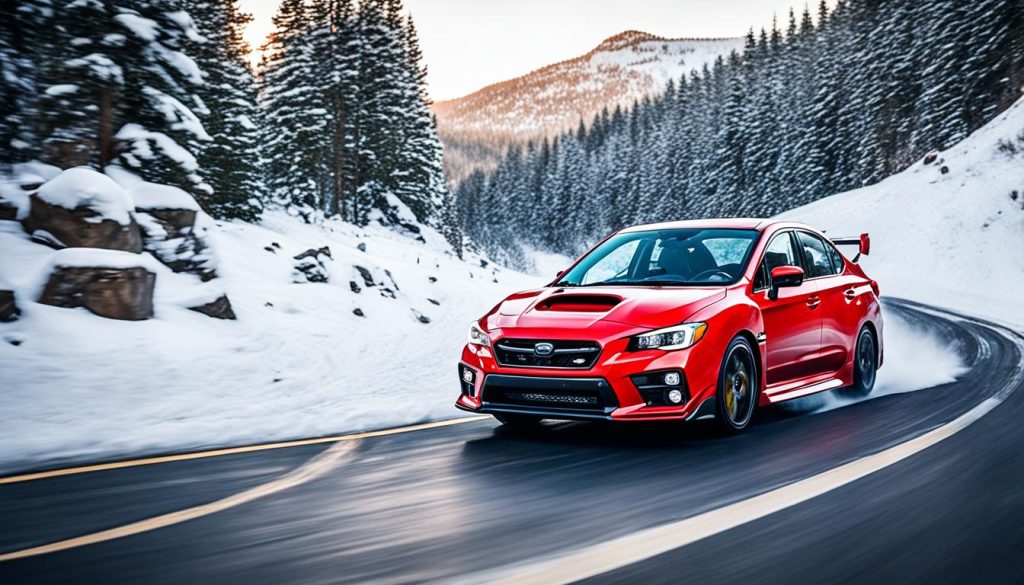
Integrating the Limited Slip Differential in AWD
Subarus with limited slip rear differentials take the brand’s pursuit of excellence a notch higher. By integrating the limited slip differential (LSD) within the AWD system, Subarus ensure optimal power distribution among the wheels. This not only prevents slip, but it also enhances grip, especially during sharp turns or when you’re accelerating on an uneven surface. Whether you’re facing a snow-laden road or a wet, slippery trail, your Subaru is designed to keep you confidently in control.
Subaru’s approach to integrating the limited slip differential in AWD vehicles demonstrates the marque’s dedication to driving innovation. It’s a true testament to their legacy of building cars that are not just transport instruments but also partners capable of handling the roads less traveled. This adaptive evolution ensures that whether you’re new to the Subaru family or a veteran motorist, your journey is backed by a legacy of advanced automotive technology.
Highlighting the Performance-Oriented Subaru WRX STI
If you’re a fan of performance cars, the Subaru WRX STI likely holds a special place in your heart. Known for its rally heritage and enthusiast-driven design, the WRX STI is a symbol of Subaru’s commitment to high-performance vehicles. Especially notable is the 2004 WRX STI, which came equipped with a feature that truly excites driving purists: the mechanical limited slip differential (LSD).
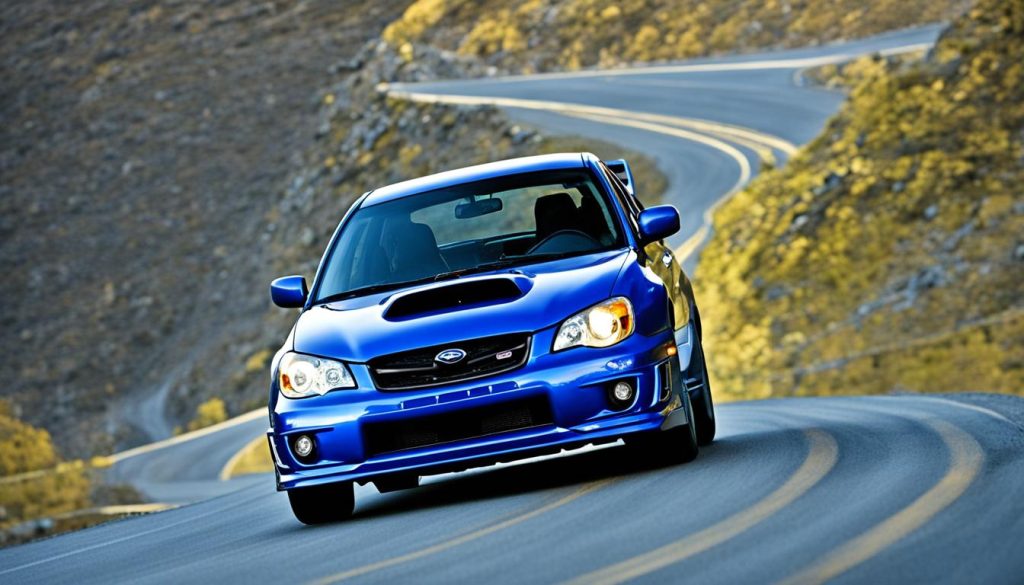
The Mechanical LSD in the 2004 WRX STI
The 2004 WRX STI’s limited slip differential was engineered for precision and responsiveness, making it capable of handling the most demanding driving conditions. The mechanical LSD was particularly innovative for its time, offering enhanced control by actively transferring power to the wheels with the most traction. This meant improved handling during aggressive cornering and superior performance on both track and street. Below, we delve into the specifics that made this system a cornerstone of the performance-oriented Subaru models.
| Feature | Description | Benefit |
|---|---|---|
| Mechanical Operation | Operates without electronic intervention | Direct driver feedback and raw driving experience |
| Torque Sensitivity | Adjusts power distribution based on wheel traction | Better grip during high-performance maneuvers |
| Durable Construction | Built to withstand rigorous use | Longevity even under extreme driving conditions |
| STI Exclusive | Initially reserved for top-tier models like the 2004 WRX STI | Added exclusivity and collectability |
The 2004 WRX STI with its mechanical LSD is more than just a car; it’s a testament to the golden era of Subaru’s performance-oriented philosophy. Owning one today means owning a piece of automotive history, cherished by Subaru enthusiasts and performance car fans alike.
Exploring Subaru’s Safety Features: VDC and LSD Combined
When it comes to driving a Subaru, you’re not just behind the wheel of any car; you’re in command of a vehicle celebrated for its robust safety systems. Subaru consistently prioritizes this vital aspect by integrating advanced technologies, such as Vehicle Dynamics Control (VDC) and Limited Slip Differentials (LSD), to safeguard your journeys. But how does this dynamic duo work together, and where do they reach their limits? Let’s dive deeper into the unique blend of Subaru’s safety features.
How Subaru’s VDC System Complements the LSD
Subaru’s safety features are designed to create a harmonious driving experience that adapts to whatever the road throws your way. The VDC system is an electronic marvel that detects and minimizes skids, helping you maintain control during unexpected situations. It works in tandem with the LSD, which balances power between the wheels for optimum traction. The way how VDC complements the LSD is by managing the vehicle’s stability while the LSD uniformly distributes torque when you accelerate out of a turn, or navigate slippery terrains. This partnership assures you remain steadfast on your path, equipped with Subaru’s top-tier security provisions.
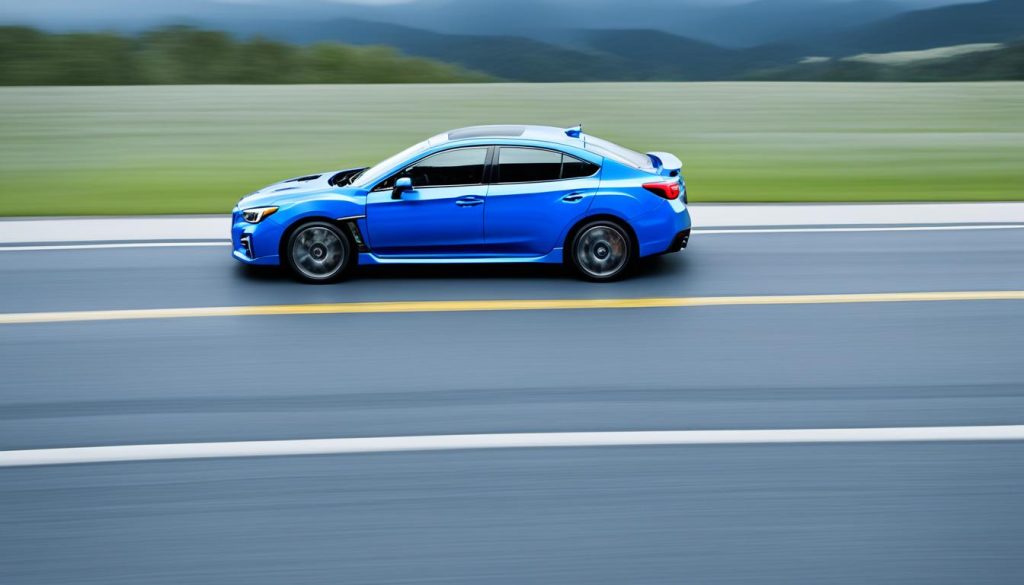
Limitations of VDC with Limited Slip Differentials
While the synergy between VDC and LSD typically heightens your Subaru’s performance, certain scenarios reflect the limitations of VDC with limited slip differentials. The VDC system, in its quest for stability, might intervene in ways that can slightly impede the raw performance benefits of an LSD during extreme driving. Unlike the LSD, VDC operates by suppressing power or applying brakes independently to each wheel when it senses a loss of control. In high-performance or off-road situations, some drivers might prefer the pure mechanical connection of the LSD without the electronic interference of VDC, leading them to seek a balance that fits their driving style.
| Subaru Feature | Function | Benefits | Limitations |
|---|---|---|---|
| Vehicle Dynamics Control (VDC) | Stabilizes vehicle via engine power adjustment and targeted braking | Enhanced stability in adverse conditions | May interfere with the performance aspects of LSD during aggressive driving |
| Limited Slip Differential (LSD) | Evenly distributes power to the wheels for optimum traction | Improved grip and control when cornering or on uneven surfaces | Could be less effective individually in stability management vs. VDC-enabled situations |
Understanding Subaru’s nuanced safety features, such as the VDC and LSD, is key to appreciating the sophistication layered into every drive. When you grasp how VDC complements the LSD and recognize the limitations of VDC with limited slip differentials, you’re more than a Subaru owner—you’re an informed enthusiast who’s ready for any adventure, backed by features that offer security without sacrificing the spirit of the drive.
Subaru Models with Limited Slip Rear Options by Year
As you explore the range of Subaru vehicles, you’ll note a recurring theme—their commitment to delivering safe and reliable all-terrain performance. A cornerstone of this philosophy is the integration of the limited slip differential (LSD) across various Subaru models by year. Let’s take a closer look at how Subaru has equipped its models with this essential feature, ensuring drivers enjoy a stable on-road and off-road experience.
Delving into Subaru’s legacy, the early 2000s marked an era where LSDs became a more prominent feature in their lineup. For instance, the 2000 Impreza 2.5RS came with an LSD that enhanced drivability regardless of whether you opted for an automatic or manual transmission. This inclusion of a limited slip rear set the stage for subsequent models that would benefit from improved traction control and power distribution.
Following the Impreza’s lead, the Legacy also adopted the LSD starting from the year 2000, particularly as part of its cold weather package—perfect for those snowy or rainy days when road conditions can turn treacherous. The Legacy wasn’t alone, as the Forester XT Turbo introduced in 2004 was also among the Subaru models with limited slip rear, a nod to its increased performance capabilities.
It’s also worth noting that in 2007 and 2008, the Outback LLBean 3.0R models not only had an LSD but also came standard with Subaru’s Vehicle Dynamics Control (VDC), further solidifying the brand’s focus on safety and driver confidence. This combination of VDC and LSD provided a robust safety net that allowed for aggressive handling when desired, without compromising on vehicle stability.
“Subaru’s innovation in integrating limited slip differentials showcases their dedication to performance and safety, ensuring that you stay in control no matter the driving conditions.”
Year after year, Subaru continues to strategically include the LSD in its lineup, reinforcing their promise of a vehicle that can conquer diverse terrains with ease. From the grip of the Impreza to the rugged adventurousness of the Outback and the Forester, if you’re in the market for a car that offers secure handling combined with thrilling performance, then considering a Subaru model with limited slip rear by year is in your best interest.
Adapting Older Subaru Models with Aftermarket LSD Upgrades
If you are the proud owner of a seasoned Subaru, you might be considering breathing new life into your vehicle through performance parts. Among such enhancements, aftermarket LSD upgrades for Subaru can provide a significant boost to your car’s road-handling abilities. While the idea of adapting your trusty ride with modern technology is exciting, understanding the nuances of compatibility and installation is crucial to achieving the upgrades you desire.
Understanding Compatibility and Installation
Before you dive into enhancing your Subaru’s performance with an aftermarket LSD, it’s essential to verify the compatibility of the upgrade with your specific model. With older Subarus, it’s not just about plugging in new parts; you have to consider the final drive ratios, dimensions, and current driveline setup. The key is to find an LSD unit that meshes seamlessly with your car’s existing components to avoid mismatches that could lead to mechanical failures or suboptimal performance.
Cost Considerations and Benefits of Upgrading
Let’s talk about cost considerations for Subaru LSD upgrades. Upgrading the differential of your Subaru is undeniably an investment. Although the initial costs may be steep depending on the quality of the parts and the complexity of the installation, the long-term benefits should not be overlooked. Improved handling, increased traction, and an enhanced driving experience are but a few of the advantages that come with a well-executed LSD upgrade. An upgraded LSD can truly transform how your Subaru performs on slick roads or during spirited driving sessions. Remember, quality upgrades can ensure your Subaru keeps up with newer models, providing you with driving satisfaction and retaining value in your automobile investment.
FAQ
Which Subaru models come with limited slip rear differentials?
Various Subaru models offer limited slip rear differentials (LSD), including certain versions and years of the Impreza, WRX STI, Legacy, and Forester lines. Availability can depend on the specific trim level and options package.
How do limited slip differentials improve traction in Subarus?
Limited slip differentials in Subarus enhance traction by distributing power to the wheels that have grip, helping to maintain control and minimize wheel spin, particularly in slippery conditions or when cornering.
What are the benefits of having a limited slip rear differential in my Subaru?
The primary benefits of a limited slip rear differential in a Subaru are improved vehicle control, increased stability on various terrains, and enhanced driving performance, especially during adverse weather conditions or on challenging trails.
How does Subaru’s Symmetrical AWD system work with limited slip differentials?
Subaru’s Symmetrical AWD system works in conjunction with limited slip differentials to provide uniform stability and power distribution. The LSD works within the AWD system to redirect power to the wheels with the most traction, enhancing overall vehicle performance and safety.
What features made the 2004 WRX STI stand out in terms of its limited slip differential?
The 2004 WRX STI featured a mechanical limited slip differential, which was particularly significant for its precise power distribution, contributing to the vehicle’s high performance and appeal to driving enthusiasts and racers.
What is Subaru’s Vehicle Dynamics Control (VDC), and how does it relate to limited slip differentials?
Subaru’s Vehicle Dynamics Control (VDC) is a safety system designed to stabilize the vehicle by adjusting engine output and applying braking to specific wheels when necessary. When combined with limited slip differentials, it helps to distribute power evenly and maintain traction, although there are some cases where the VDC may perform better with open differentials.
Which Subaru models and years included the limited slip rear differential option?
Subaru has included the limited slip rear differential option in models across various years, such as the late ’90s and early 2000s Impreza 2.5RS, certain Legacy models, the Outback LLBean 3.0R, and the Forester XT turbo variants. The availability has varied with model and configuration changes over the years.
Can you upgrade older Subaru models with an aftermarket limited slip differential?
Yes, owners of older Subaru models can upgrade to an aftermarket limited slip differential. It’s important to consider compatibility with the existing driveline, as well as the final drive ratios when selecting an LSD for installation.
What should be considered in terms of cost and benefits when upgrading to an aftermarket LSD?
When considering an aftermarket limited slip differential upgrade, owners should evaluate the cost of the component and installation against the benefits of improved traction, handling, and driving dynamics. While aftermarket upgrades can be expensive, they can significantly enhance the driving experience and performance of the vehicle.

